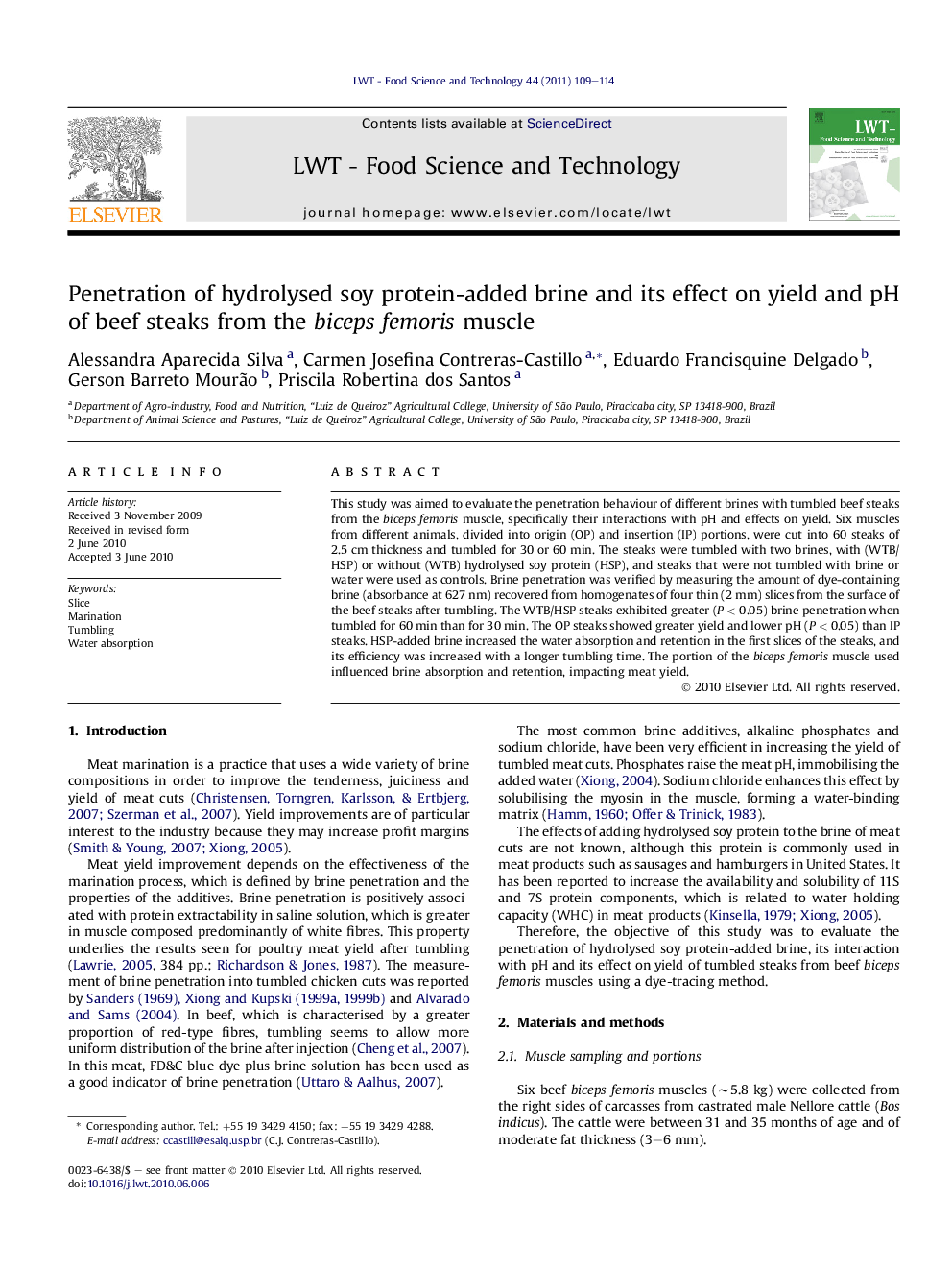| Article ID | Journal | Published Year | Pages | File Type |
|---|---|---|---|---|
| 4564220 | LWT - Food Science and Technology | 2011 | 6 Pages |
Abstract
This study was aimed to evaluate the penetration behaviour of different brines with tumbled beef steaks from the biceps femoris muscle, specifically their interactions with pH and effects on yield. Six muscles from different animals, divided into origin (OP) and insertion (IP) portions, were cut into 60 steaks of 2.5Â cm thickness and tumbled for 30 or 60Â min. The steaks were tumbled with two brines, with (WTB/HSP) or without (WTB) hydrolysed soy protein (HSP), and steaks that were not tumbled with brine or water were used as controls. Brine penetration was verified by measuring the amount of dye-containing brine (absorbance at 627Â nm) recovered from homogenates of four thin (2Â mm) slices from the surface of the beef steaks after tumbling. The WTB/HSP steaks exhibited greater (PÂ <Â 0.05) brine penetration when tumbled for 60Â min than for 30Â min. The OP steaks showed greater yield and lower pH (PÂ <Â 0.05) than IP steaks. HSP-added brine increased the water absorption and retention in the first slices of the steaks, and its efficiency was increased with a longer tumbling time. The portion of the biceps femoris muscle used influenced brine absorption and retention, impacting meat yield.
Related Topics
Life Sciences
Agricultural and Biological Sciences
Food Science
Authors
Alessandra Aparecida Silva, Carmen Josefina Contreras-Castillo, Eduardo Francisquine Delgado, Gerson Barreto Mourão, Priscila Robertina dos Santos,
